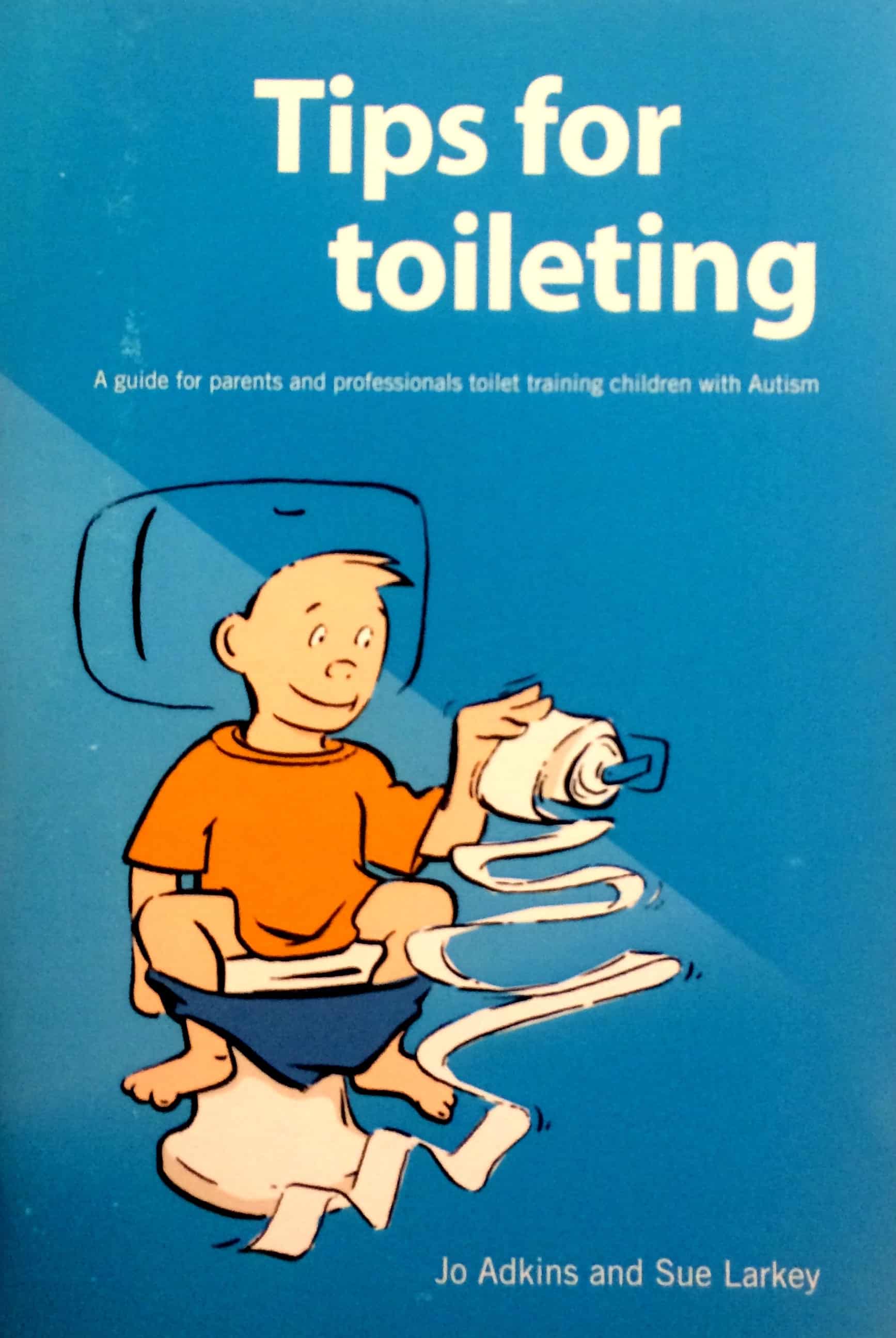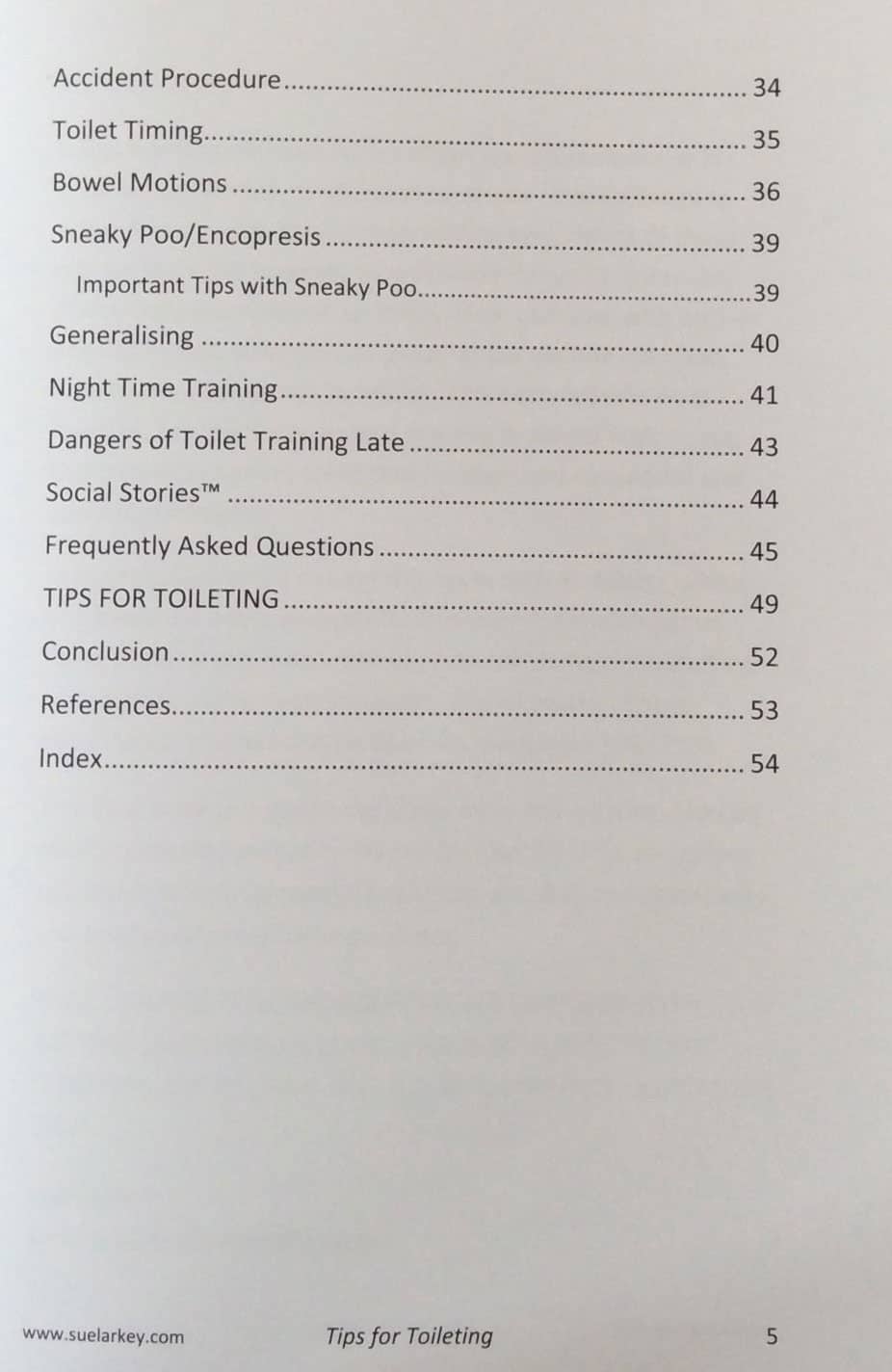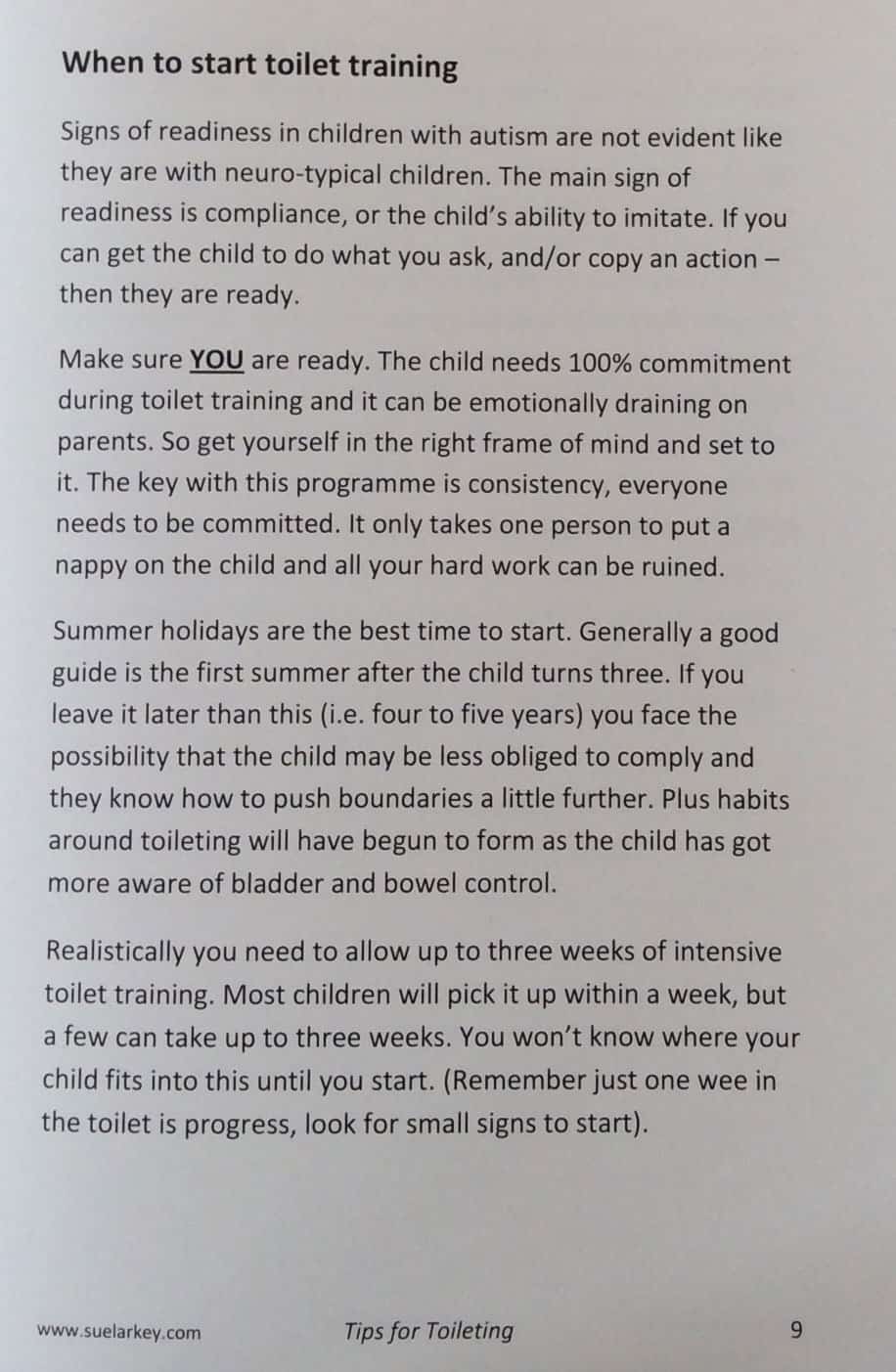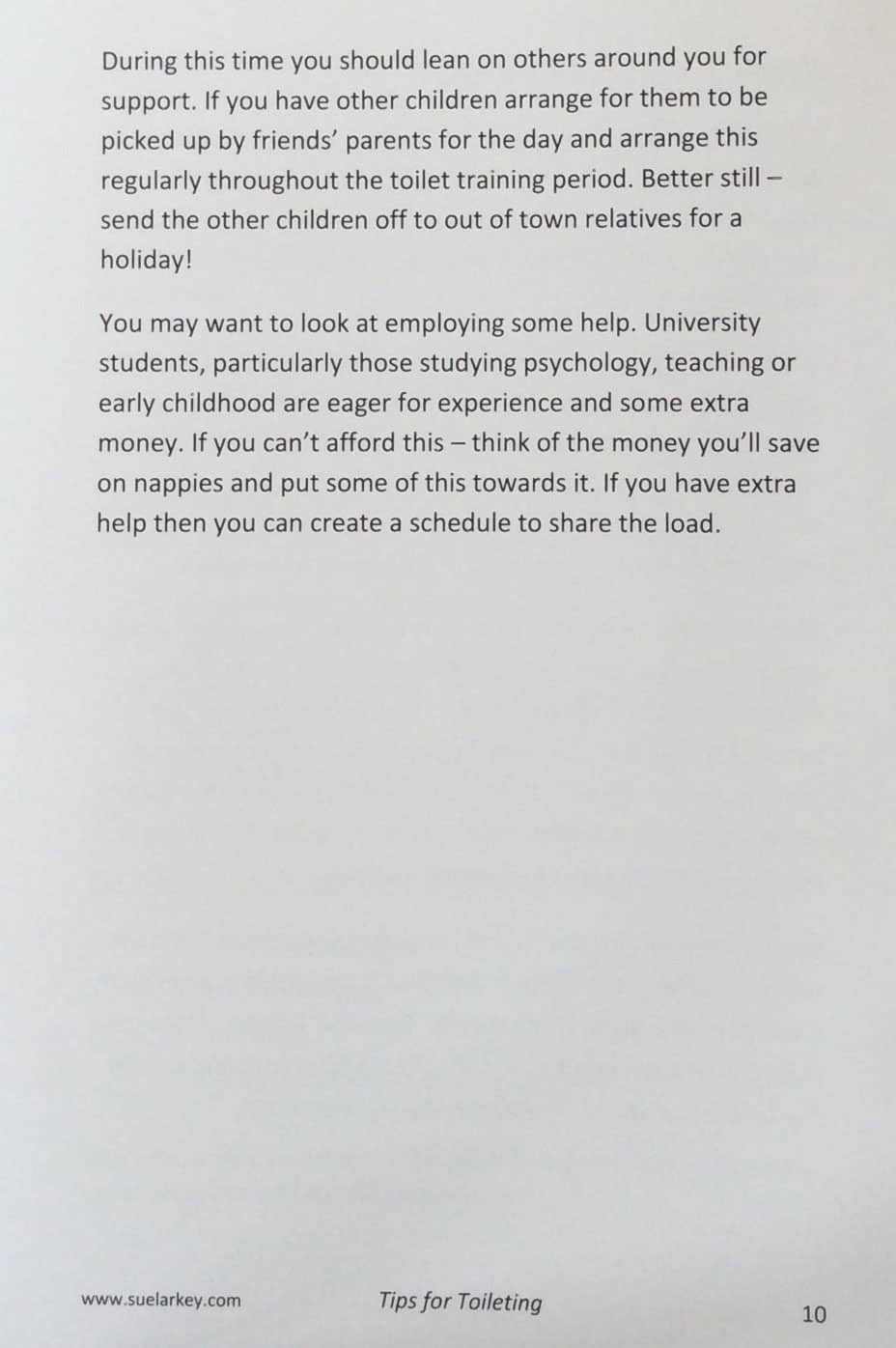KEY STRATEGIES FOR TOILET TRAINING KIDS WITH AUTISM
Learn how to Toilet Train kids with Autism Today!
Toilet training kids is a big task even for neuro-typical children. Parents often procrastinate over when to start and we keep delaying it for whatever reason we can think of!
My biggest concern for children with ASD is if they are not out of nappies by five years of age then they often start to lose muscle control and can end up with long term bowel and bladder issues. Toileting is not something that the child will grow into or get better with age. We all need to action ASAP – and this includes schools. If a child is attending pre-school or school when the parents are toilet training then everyone needs to get behind the toileting programme and provide consistency all day every day until the child has mastered it.
Learn how to Toilet Train Kids with Autism Today!
When to Start Toilet Training
Signs of readiness in children with autism are not evident like they are with neuro-typical children. The main sign of readiness is compliance, or the child’s ability to imitate. If you can get the child to do what you ask, and/or copy an action – then they are ready.
Summer holidays are the best time to start
Generally a good guide is the first summer after the child turns three. If you leave it later than this (i.e. four to five years), you face the possibility that the child may be less obliged to comply and they know how to push boundaries a little further. Plus habits around toileting will have begun to form as the child has got more aware of bladder and bowel control.
Realistically you need to allow up to three weeks of intensive toilet training. Most children will pick it up within a week, but a few can take up to three weeks. You won’t know where your child fits into this until you start. (Remember just one wee in the toilet is progress, look for small signs to start)
Think “toilet TIMING” not “toilet training”
Create good routines around toilet timing. Have set times when the child must go to the toilet. Examples include:
- When they get up in the morning.
- Before leaving the house at any time of the day.
- Before bed (as part of the bedtime routine).
- Any time they may not be able to access a toilet for an hour or more.
- Before going into any water (bath, swimming pool, etc).
- Before getting into the car.
- Before eating i.e. toilet, wash hands, etc.
Why do children with ASD continue to have accidents and take longer to be dry at night?
Some children on the spectrum don’t realise they need to go to the toilet until they are absolutely desperate and it’s literally seconds before they cannot physically hold on any more that they believe that they need to go. This is why often when they go it is a huge flood, or why they often do not night train like other children as their brain doesn’t wake them up until it is too late, if at all.
At school many students need toilet routines as they often don’t think to go in breaks as they don’t notice they need the toilet until their bladder is FULL.
10 key strategies for toilet training

Avoid potties! Start out wih the end in mind. Children with autism have trouble generalsiing and the last thing you want is to have to carry their potty around wiht you everyhere you go!

Visuals are very important. Make up some visuals to help your child understand the toilet process and to provide a prompt.

Prepare lots of FUN activities to do with your child. Making going to the toilet fun takes the pressure off and makes it a motivating place to go.

Rewards are one of the most important elements of toilet training – children need a motivator as it is just too easy to continue to go in their nappy. Rewards need to be instant and powerful. Reward IMMEDIATELY and reward the same every time.

Base yourself in or right next to the toilet for the first few days of toilet training. Have as many home comforts in the room for the child to make it a fun environment.

Remove nappies. Once you start toilet training, do not let the child put on any form of nappy until they go to bed at night. If you let them wear nappies during the day at all, they will learn to hold on until they are in their nappy.

Toilet time – put the child on the toilet every 30 minutes for 10 minutes at a time, increasing time as they get the hang of it.

Teach the child the whole steps of toileting – including putting on underpants, flushing the toilet and washing hands.

Some children may have sensory sensitivities related to toileting. Sensory sensitivities need to be respected and worked on.

Create good routines around toilet timing. Have set times when the child must go to the toilet.
Want to learn more tips with Sue Larkey?
Are you?
- Passing on a student with Neurodiversity to another educator next year
- Do you know a student who will be changing teachers, classrooms, or school settings in 2026
- Planning your staff, classes for 2026
Now is the time to prepare for 2026.
By joining my course, you will get the knowledge, skills and strategies to set yourself and your students up for success in 2026.
If there's even a remote possibility of having a child with Neurodiversity in your classroom next year, join me to prepare now.
Training in the first term often presents challenges:
- Don't want a day out for training when setting up class at the start of the year.
- Students with neurodiversity may start off dysregulated because the necessary structures and strategies are not yet in place.
- Educators find themselves playing catch-up while addressing 'behaviours'.
- Many educators feel overwhelmed.
Tips for Toileting
| by Jo Adkins & Sue Larkey | A guide for parents and professionals toilet training children with an autism spectrum disorder. Contents include: When to start toilet training, getting started, the use of rewards, techniques, dealing with accidents, sensory issues, bowel motions, generalising, night time training, frequently asked questions, pages of visuals all ready for you to cut out and use! And lots more! 60 pages of helpful hints and ideas.
$29.95
23 in stock
UNDERSTANDING AuDHD: Teaching & Supporting Students with Autism and ADHD Co-occurrence
✅ 2 Hours, 8 Lessons
✅ 6 Weeks to Complete 🎁 Bonus 6 Months Access (available until 28 Oct 25)
✅ Certificate of Completion
✅ Lesson Transcripts
 2 Hours
2 Hours

$149








 2 Hours
2 Hours

 Sorry we no longer ship items outside Australia. Please consider the digital versions of Sue’s Books –
Sorry we no longer ship items outside Australia. Please consider the digital versions of Sue’s Books – 